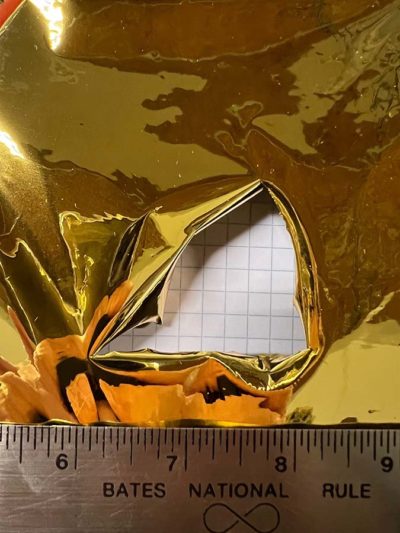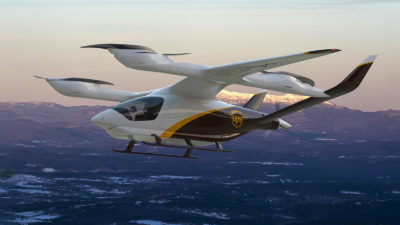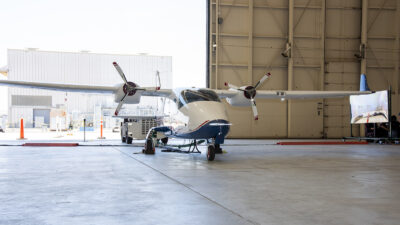Innovative imaging methods bring new diagnostic capabilities
By Thomas P. Jenkins|December 2021
The Aerodynamic Measurement Technology Technical Committee advances measurement technology for ground facilities and aircraft in flight.
In January, researchers at the University of Michigan developed a new diagnostic method for the detection of mid-infrared emission from species of interest in rotating detonation combustors. The technique, upconversion imaging, is based on a pulsed mid-IR light source. UCI is an alternative to direct mid-IR detection that uses nonlinear optical frequency mixing to shift mid-IR wavelengths carrying a target image to wavelengths of visible light that can be imaged at higher efficiency with high-performance silicon-based charged coupled device/complementary metal-oxide semiconductor, or CCD/CMOS, cameras. UCI has several favorable properties, including high-spectral selectivity, high-temporal resolution and superior low-light detectivity. Researchers applied this technique to the imaging of carbon dioxide emission from an RDC operated with a hydrogen-carbon dioxide-air mixture. They performed imaging in high-pressure and high-temperature regions associated with a detonation front. The resulting measurements demonstrated a high spatiotemporal resolution capable of imaging small structures near the supersonically propagating detonation wave front. The results show how this technique can be used to observe sharp gradients and millimeter-scale structures in the high-temperature, high-pressure zones of RDC flow fields with a temporal resolution of approximately 200 nanoseconds.
In March, California-based MetroLaser Inc. received a Phase II Small Business Innovation Research award from the U.S. Air Force to develop diagnostic tools and facilities to characterize plasma-material interactions in high-enthalpy flows. The program supports hypersonic flight applications and takes advantage of MetroLaser’s expertise in laser-based diagnostics of combustion and aerodynamic environments.
Also in March, MetroLaser developed a fieldable megahertz-rate digital holography system that enables the study of ultrahigh-speed phenomena in three dimensions. Researchers used the system to study the collision of a supersonic projectile and its bow shock with water droplets for applications involving vehicle survivability in adverse weather conditions. They reconstructed and de-twinned (removed the conjugate twin image that always appears due to symmetry reasons) the holograms to probe complex shock wave dynamics and droplet breakup. In October, MetroLaser was awarded a related Air Force program to develop evaluation tools to measure surface quality and chemistry of carbon-carbon composites and coatings. The company expects these two programs to contribute to the development of hypersonic flight vehicles.
Also in October, MetroLaser demonstrated a three-component velocity diagnostic being developed for supersonic aircraft exhaust flows called planar Doppler velocimetry. PDV enables spatially resolved distributions of the total velocity vector in particle-containing flows, such as combustion gases, and is useful for studying three-dimensional flow phenomena related to jet noise. The PDV method was demonstrated on a laboratory scale jet flow in preparation for a full-scale fighter jet engine test.
Contributors: Mirko Gamba and Jacob George


































